
Preromanesque Arquitecture “Santa María del Naranco” in Oviedo, Asturias.
Santa María del Naranco is a church situated four kilometers away from Oviedo, over Mount Naranco’s skirt. It wasn’t originally conceived as a church, it was the Main building of a group of constructions among the Ramiro I’s palace.
The King Ramiro I of Asturias ordered it to be built as a royal palace as part of a larger complex that also incorporated the nearby church of San Miguel de Lillo, 100 meters away. It was completed in 848. Its structural features, such as the barrel vault — with transverse ribs corresponding one-to-one with contraforts at the exterior, make it a clear precursor of the Romanesque construction. The exterior decorations, as well as the use of stilted arches mark the intended verticality of the composition. It was converted into a church at the end of the 13th century.
The three arches symbolize the emblematic “Natural Paradise” of Asturias.
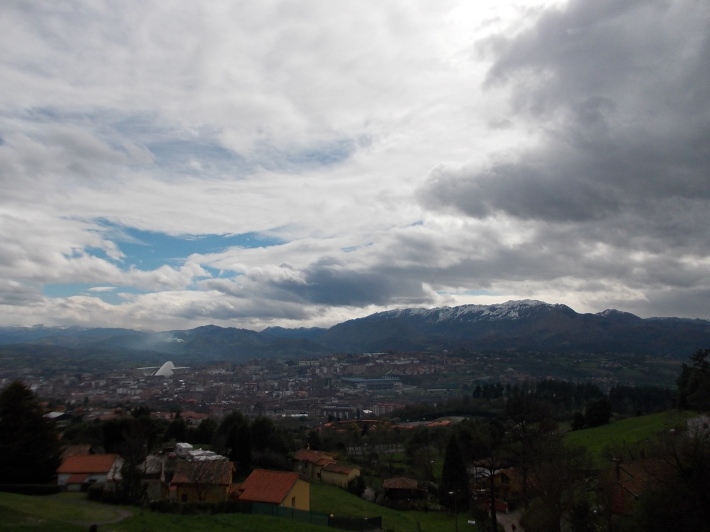
The majestic Calatrava Auditorium, view from Mount Naranco.

The Calatrava Auditorium, and Mall, a modern landmark of Oviedo.

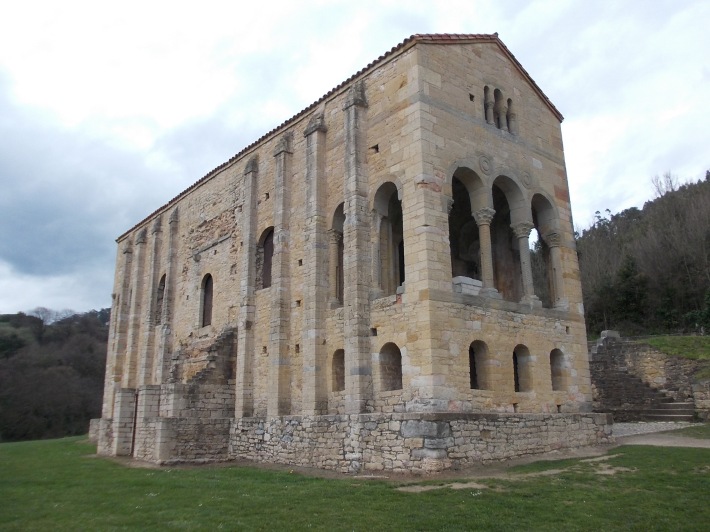
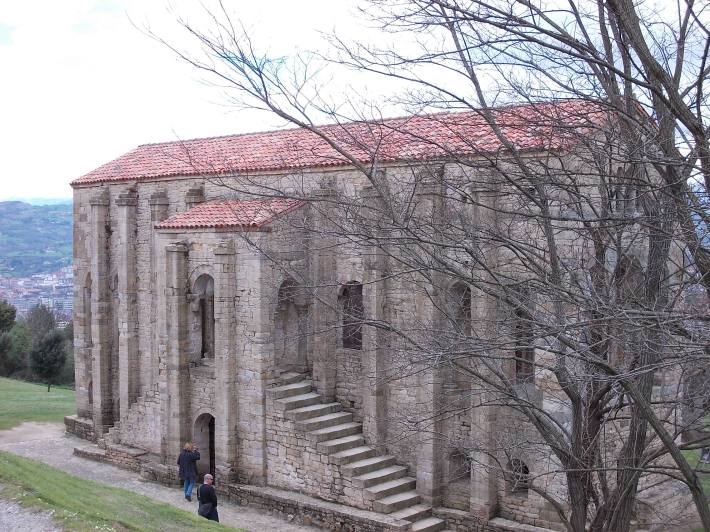
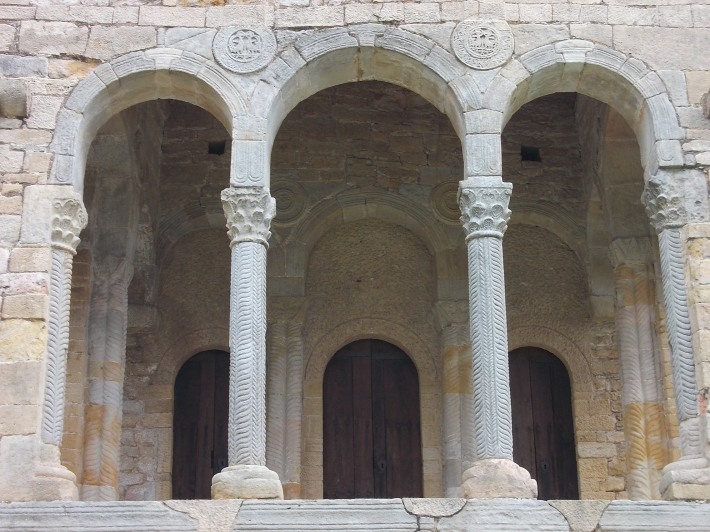

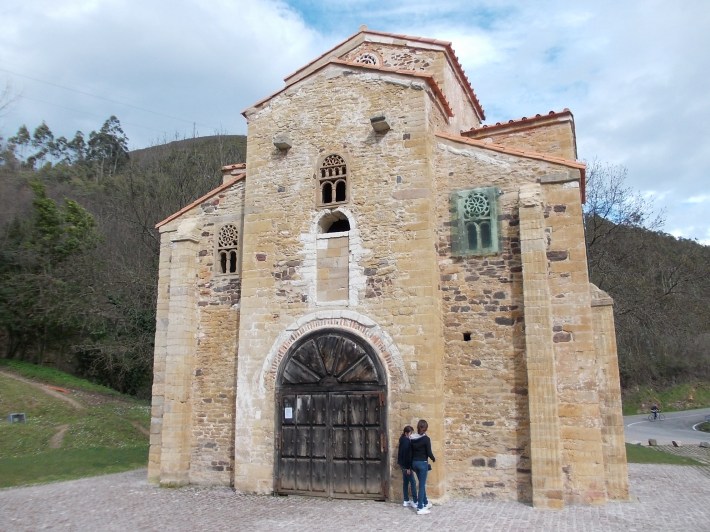

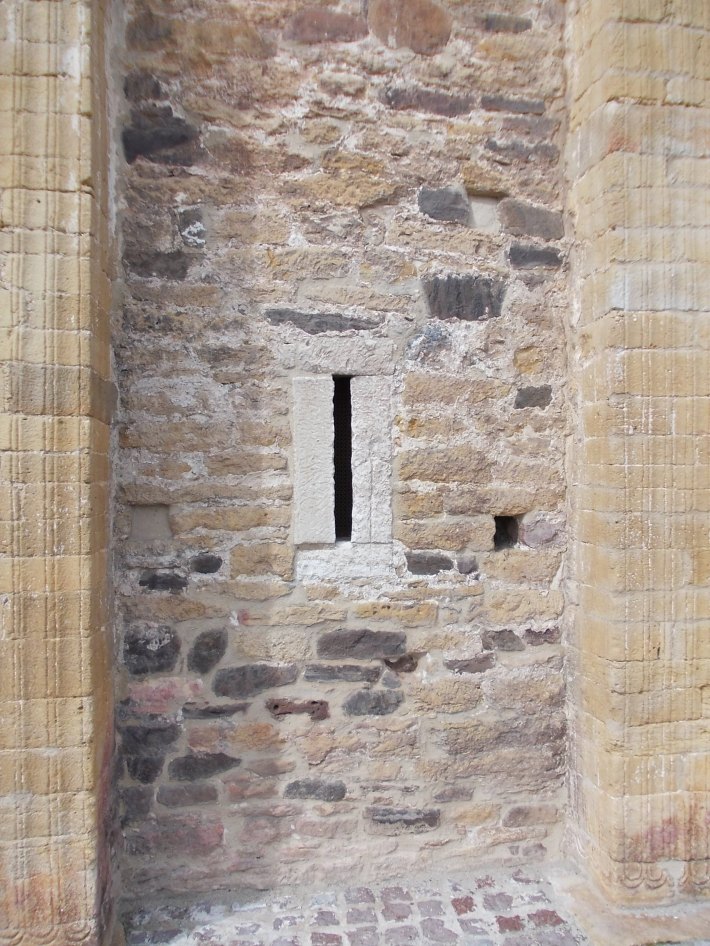



Magnificent.
Thanks for coming by!!!
Gorgeous! I didn’t get to see Santa María del Naranco, but it looks great. I suppose I’ll just have to go back then. 🙂
These buildings are preromanesque, as well as the Cangas de Onís bridge that you mentioned in your recent post; You’re right, I really don’t understand why it is called the Roman Bridge, anyway its lovely. The Oviedo’s landscapes from Mount Naranco are quite nice, it worth it to come back!!!
Saludos.
HI, I nominated you for Very Inspiring Blogger award here http://praguebykaty.wordpress.com/2013/03/22/praguebykaty100/, beacuse I think your blog is really stunning.
You are very kind, you should be nominated as well; your blog is very cute!!! http://praguebykaty.wordpress.com/
Thank you for coming by and for your encouraging words, I really appreciate it!!!
Best Regards.
How beautiful and evocative!
I liked “evocative”, thank you for coming by!!!
What beautiful churches! And what a backdrop! Hope the winter’s ended in Asturias finally.
It seems the winter has finally ended; the past days have been exceptionally warmer with no showers at all. Thank you for liking the pictures. 🙂
Amazing that these building are still standing, pollution, erosion and all that.
You´re right, the good conditions of the structures are amazing. Thank you for coming by.
Saludos.
Visited the church last year and then had a very nice lunch at the Argentinian restaurant with our Spanish neighbours. Totally recommend the meat platter!
I haven´t been there, I´ll give it a try. Is the name of the restaurant “The Argentinian?
Thank you for coming by.
Saludos !!!!
Sweet you,
I’ve an award for you, for the person who you are and the things you share with the world
http://summer4soul.wordpress.com/2013/06/10/peace-is-a-free-choice-so-is-this-award/
Thank you for that..
Namasté, Summer
Thank you!!
Good to see this. As in many churches, it looks to be a defensive construction too, hence the arrow slit detail. Could the three arches also allude to the Christian Trinity? And thanks for the like!
Yes they do, actually, the three arches are the symbol / logo of the “Asturias Natural Paradise” that practically represent this Autonomous Community. Thanks for coming by !!!!